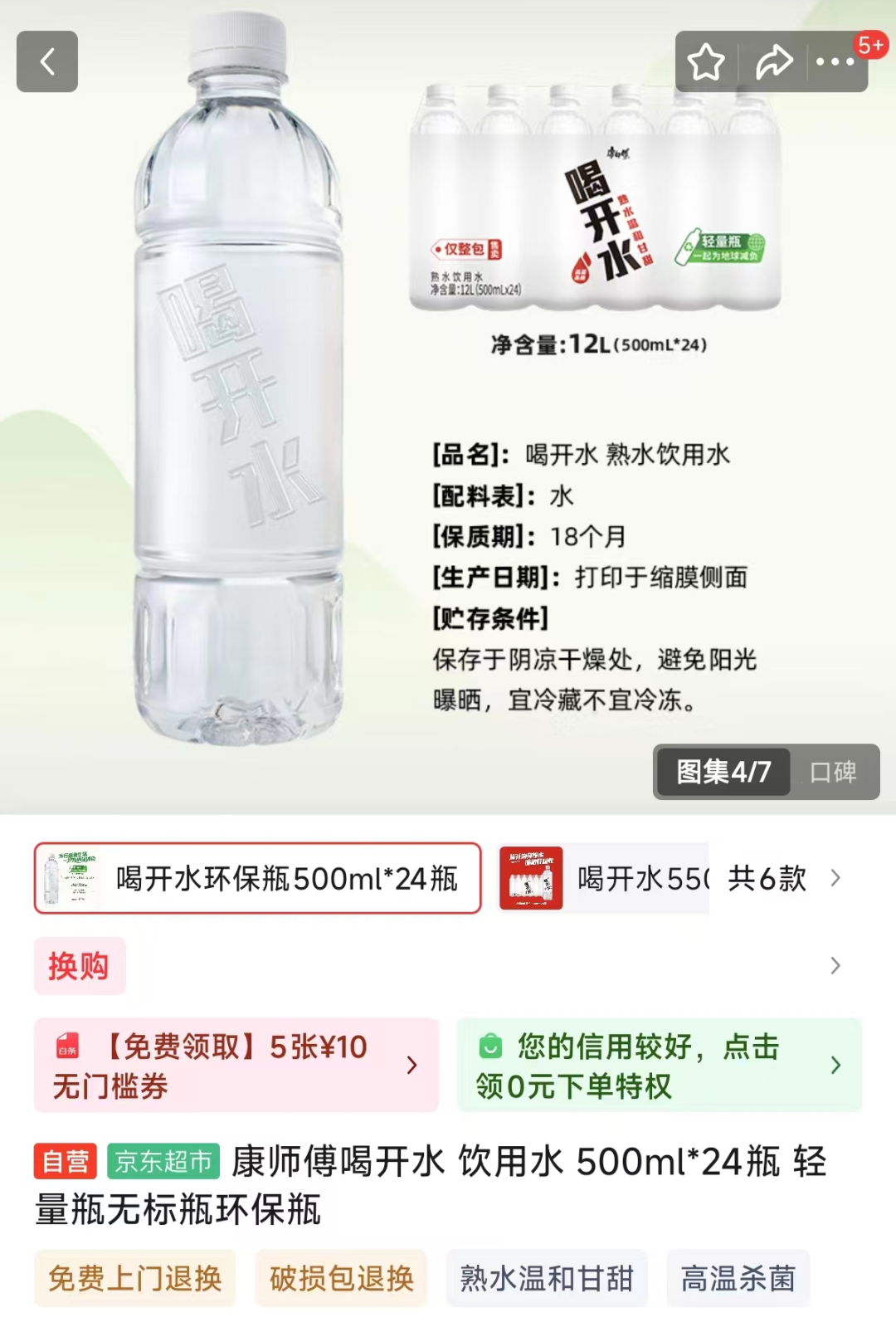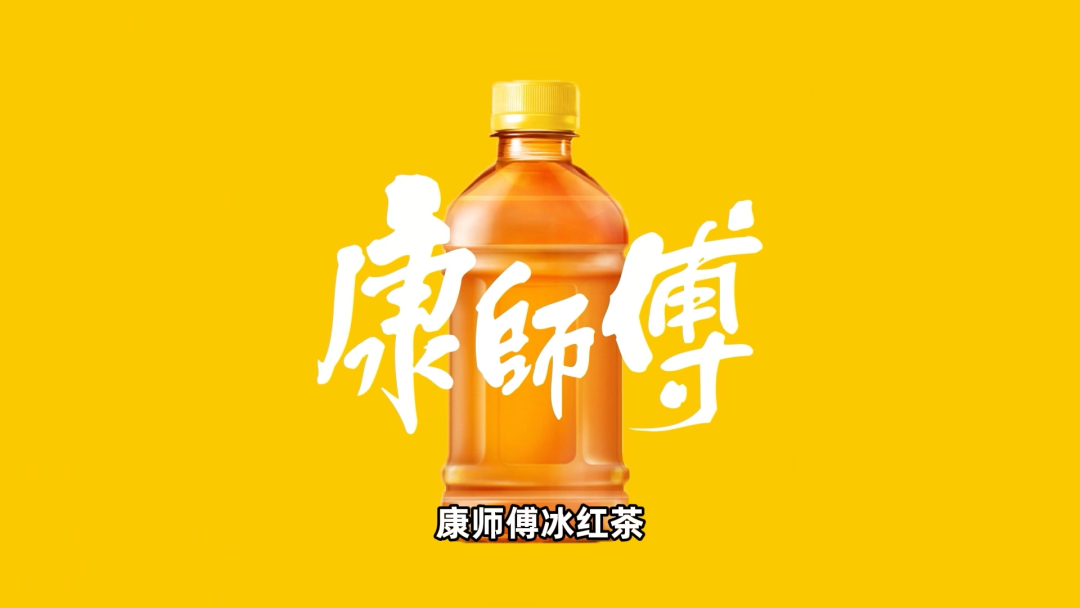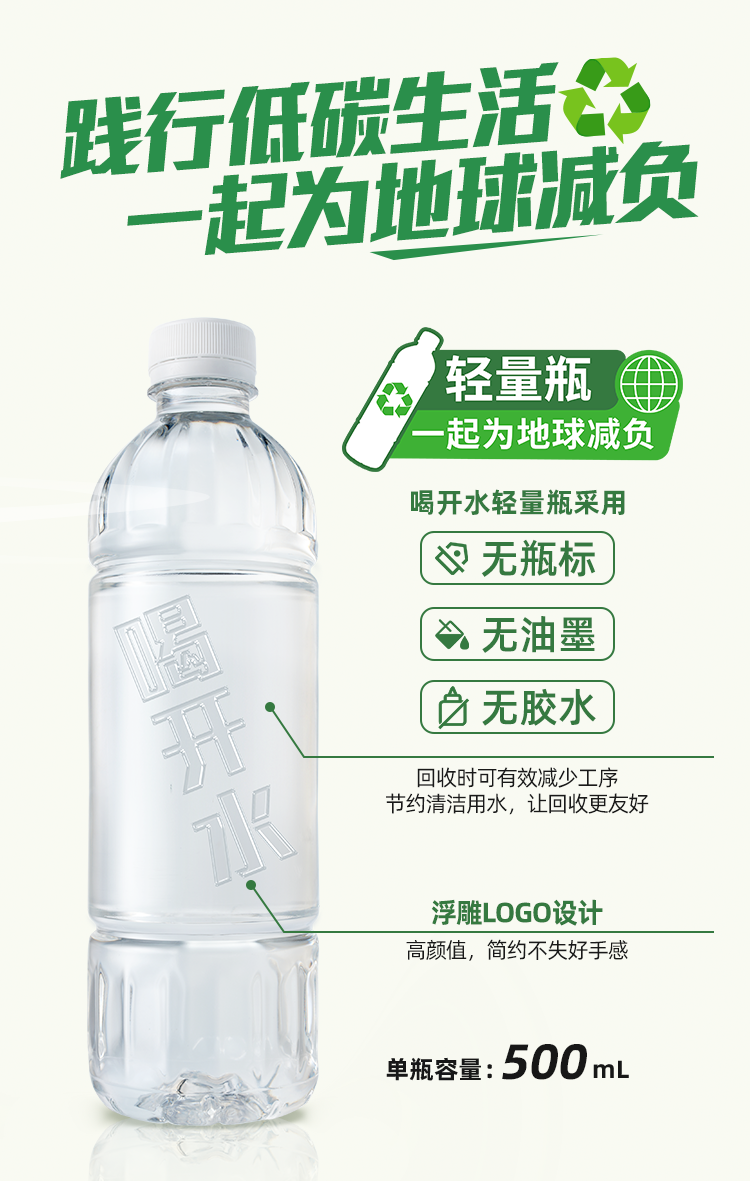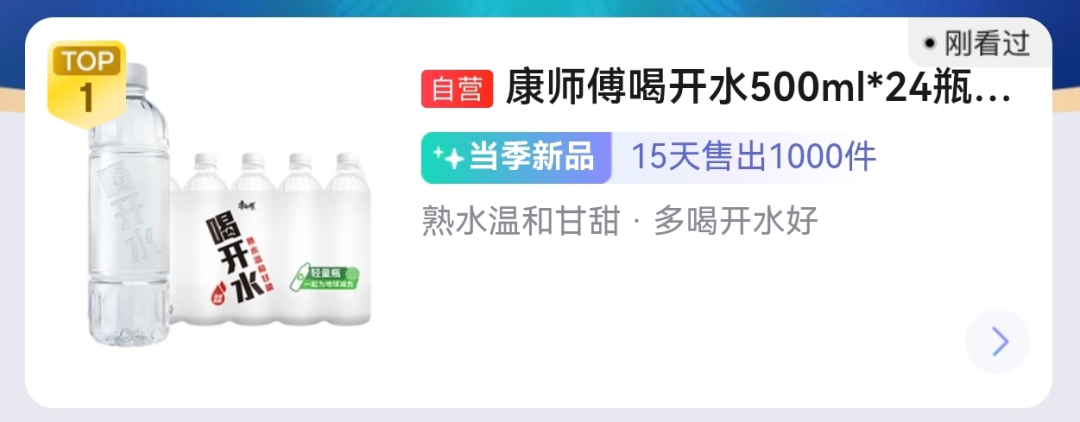No Label Again? Master Kong Tests "Naked Bottle"! Easy to Remove Labels, How Hard Is It to Break Habits? The Challenges of Popularizing Label-Free Water
Good packaging is not only an indispensable component of product competitiveness but also an important vehicle for conveying brand value and philosophy.
The Pentawards, known as the "Oscars" of the packaging design industry, released the "2024-2025 Packaging Trends Report," summarizing the top ten trend hotspots in future packaging design. Among them, "Leave No Trace" ranks first, emphasizing that packaging design should reduce the environmental footprint left by products or promote the development of a circular economy through the reuse of waste materials.
This prediction is rapidly becoming a reality, with an increasing number of food and beverage companies transforming the concept of "low-carbon and environmentally friendly" packaging into actual product practices. Recently, Kang Shifu Drinking Water launched a new "label-free lightweight bottle" product on its official JD.com flagship store, once again becoming a focal point of industry attention.


Sustainable trends are also a cycle?
The unlabelled wind has blown back again.
A month ago, Sam's Club's private label Member's Mark launched its first label-free PET bottled drinking water. After three years, the "label-free" sector, which had been dormant for a long time, is once again in the spotlight.
The concept of "no label" first appeared in Japan, with the original intention of reducing plastic and facilitating recycling. Similar products have also been launched domestically.
In 2020, the mineral water brand Evian launched a renewable plastic bottle featuring an "embossed" design without a label. In 2022, Master Kong applied label-free PET bottle packaging to its lemon-flavored iced tea and sugar-free iced tea. In the same year, Pepsi introduced the first label-free Pepsi Cola in the domestic market, and Eastroc Super Drink also launched similar products. Therefore, 2022 is also referred to as the "first year" of label-free bottled beverages in China.However, the trend of label-free products did not sweep the market as expected; instead, after a brief period of discussion, it faded into obscurity.

The trend came quickly and faded just as fast due to the market's insufficient trust in label-free products at the time and the low recognizability of individual bottles.
Will the launch of the new "no-label lightweight bottle" product from Master Kong drinking water lead the industry to start a new trend of "doing less" with low-carbon and environmentally-friendly packaging?

The main focus is on the "three noes" concept, simple yet not simplistic.
The new product launch prominently features the "Three No's" concept: no labels, no ink, no glue.
In practicing low-carbon environmental protection, Master Kong's "no-label lightweight bottle" for drinking water has achieved excellence. The product eliminates ink printing on the bottle body, using laser technology for labeling, reducing the use of materials and energy, and harmoniously coexisting with nature in a green and low-carbon manner. With its "three no" design—no labels, no ink, and no glue—this product not only effectively reduces carbon emissions but also simplifies the recycling process, saving cleaning water and making recycling more environmentally friendly.
It is worth mentioning that while practicing a low-carbon lifestyle through packaging innovation, Master Kong’s “No-Label Lightweight Bottle” for Drinking Water also adheres to a minimalist yet sophisticated design philosophy. The “Drinking Water” bottle features a specially embossed logo design, which not only enhances its visual appeal but also establishes a “super symbol” for the brand, further improving the hand-held experience.

Currently, Master Kong's "No Label Lightweight Bottle" of drinking water is launched as a new product on JD.com, primarily focusing on the 500ml packaging specification. It offers low-carbon quality water delivered to your home with one click through "whole package sales".
It has been proven that once Master Kong's "No Label Lightweight Bottle" boiled water was launched, it quickly gained a good product reputation and sales performance, and immediately topped the relevant drinking water list on JD.com's new product bestseller list.


The "streaking" journey of unlabeled beverages
Challenges encountered during the journey forward
Although label-free beverages carry the mission of environmental protection and the concept of innovation, their path to market promotion is far from smooth. The seemingly simple act of removing labels actually affects the entire industry chain and challenges consumers’ established habits, facing a series of real and complex obstacles.

1、The lack of consumer trust! Labels are the most direct window for consumers to quickly obtain core product information (brand, flavor, ingredients, shelf life, place of origin, barcode, etc.). The "label-free" design transfers this information to bottle engravings, cap markings, or electronic labels that require scanning a QR code to access. "Label-free" can easily lead consumers to associate it with "information opacity," and even raise doubts such as "Is it a near-expiry product?" or "Are the ingredients compliant?"
2. Adaptability issues in retail scenarios! In settings such as convenience stores and vending machines, where single-bottle sales are predominant, if the bottle lacks basic information (such as flavor), consumers will have no basis for making a choice. Relying entirely on external box information or additional label stickers is almost impractical in single-bottle sales scenarios. This limits the promotion of label-free beverages in these important channels.
3、The real challenges of supply chain and cost: Implementing label-free beverages means a large-scale modification or replacement of existing bottling production lines. Laser engraving, high-precision coding, or specially designed caps with information may cost significantly more than traditional paper or plastic labels.

Why should it be label-free?
Where should unlabeled beverage bottles go?
Zhong Kai, Director of the Science and Technology Food and Health Information Exchange Center, stated:The most direct benefit of "label-free" is the reduction of plastic and ink usage in the production process. Additionally, "label-free" is a design that facilitates recycling.PET materialMost labels are made of PVC material, and "label-free" can reduce recycling processes and costs, achieving efficient recycling and high-value reuse.
Regarding the destination of unlabeled beverage bottles after consumers finish drinking, Zhong Kai stated that the vast majority of PET beverage bottles recycled in China are "downcycled," such as being used to produce polyester fiber fabrics, automotive plastic parts, and so on. A small portion undergoes fine processing to be converted into food-grade recycled PET (rPET) and re-enters the beverage production line. Internationally, this is known as "bottle-to-bottle" same-grade recycling. However, this food-grade rPET can only be used for export because mainland China has not yet approved its use in food packaging.
"Label-free" beverage bottles will also enter the recycling stream, but their advantages in recycling convenience are difficult to realize in China. The recycling rate for beverage bottles in China is already as high as 95%, and it does not adopt the deposit system and closed-loop recycling model used in Europe and the United States. "Label-free" beverage bottles are inevitably integrated into the traditional beverage bottle stream. Therefore, the urgent task is to promote the same-grade recycling and utilization of food-grade rPET.

Low-carbon and environmentally friendly practices are not achieved overnight; the path to sustainable development is a long and arduous one.Finding the optimal solution for label-free beverages that balances sustainability, convenience, compliance, and cost-effectiveness requires long-term collaborative efforts and innovative practices from brands, packaging suppliers, retailers, consumers, and policymakers.
Currently, it is more like a "pilot direction" full of potential rather than a mature solution that can immediately replace traditional packaging on a large scale. Its true popularization still requires time and the emergence of more intelligent solutions.
【Copyright and Disclaimer】The above information is collected and organized by PlastMatch. The copyright belongs to the original author. This article is reprinted for the purpose of providing more information, and it does not imply that PlastMatch endorses the views expressed in the article or guarantees its accuracy. If there are any errors in the source attribution or if your legitimate rights have been infringed, please contact us, and we will promptly correct or remove the content. If other media, websites, or individuals use the aforementioned content, they must clearly indicate the original source and origin of the work and assume legal responsibility on their own.
Most Popular
-

List Released! Mexico Announces 50% Tariff On 1,371 China Product Categories
-

EU Changes ELV Regulation Again: Recycled Plastic Content Dispute and Exclusion of Bio-Based Plastics
-

Case Study | Clariant AddWorks™ Additives Solve Plastic Yellowing Problem
-

[PET Weekly Outlook] Polyester Bottle Chips Expected to Oscillate and Warm Up with Costs Today
-

EVA Morning Prices on September 12: Most of the Market Holds Steady, Highest Rise of 50 Yuan






